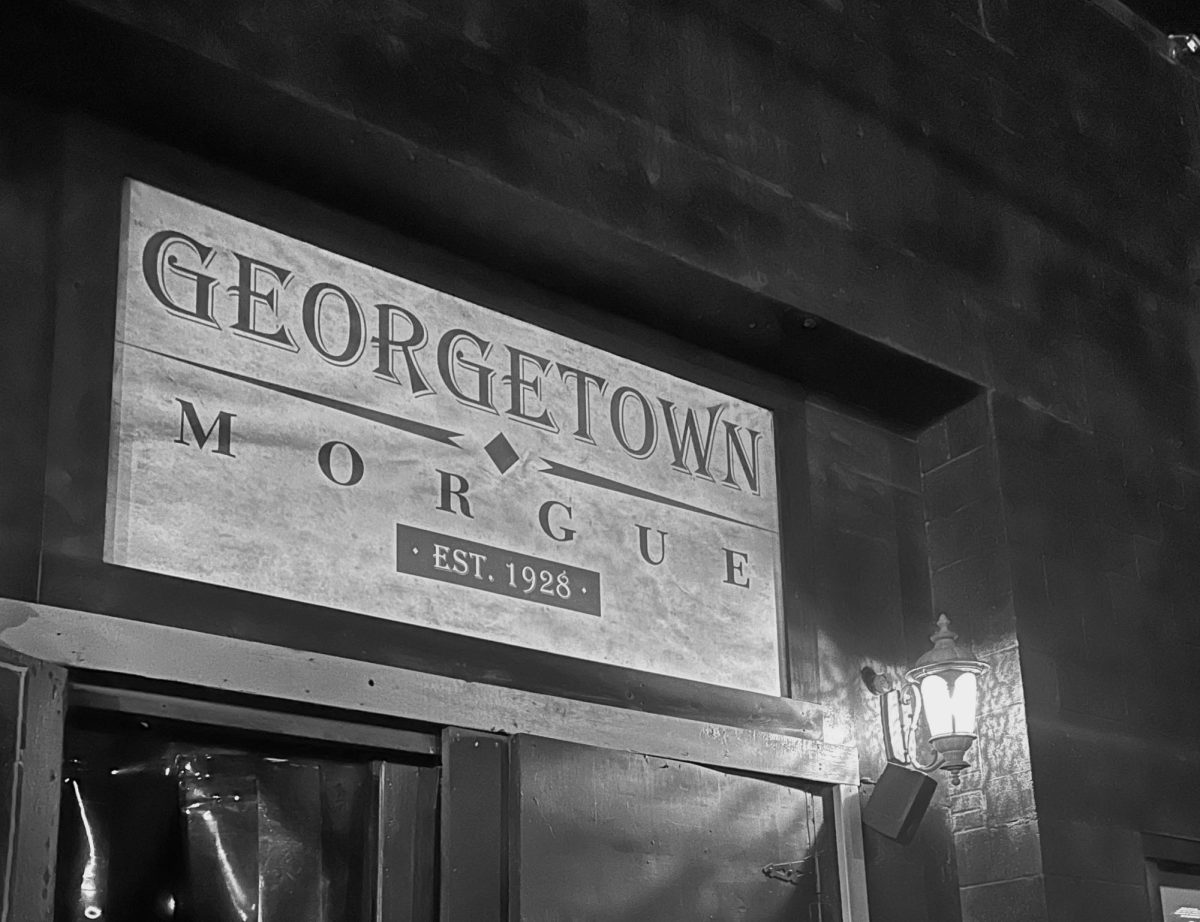I like to consider myself an enthusiastic scaredy-cat. I am deeply intrigued by all things horror: the macabre, the unknown, the insight into the human psyche that one’s venture into their own fears may uncover. I also yelp when someone slams a kitchen drawer too loud or I see something shadowy out of the corner of my eye. In the words of Walt Whitman, “I contain multitudes.”
It is the contradictory nature of my own being, alongside my insatiable dedication to hard-hitting journalism, that brought me to two different haunted houses this autumn, the first of which was Frighthouse Station. Situated in the historic Freighthouse Square in Tacoma, Frighthouse Station is a storybook haunted house, if there is such a thing.
While waiting in line, I was bombarded by a man in all black with a comically large syringe making deep and unsettling eye contact with those waiting. Following this experience, I am led to believe that there is something incredibly pathetic to the manner in which I look at things that scare me, as this mysterious man smiled once he got to my point in line and began to jab the syringe toward my face.
As someone who dislikes both needles and men making a show of me, this was an unfortunate situation for me to find myself in. However, in the name of journalism, I ventured on.
From the second you enter Frighthouse Station, you are a participant in live theater. Greeted by a mad scientist with an unconvincing but altogether amusing German accent, you are welcomed into an experimental sleep study institute.
The study? A poor girl has been unconscious for days, having nightmares of an old TV show she watched growing up: “Mr. Giggles.” It is the scientists’ belief that they can teleport you inside of the young girl’s nightmares in order to wake her up from the inside.
After stepping through a smokey, green portal, hot with LED lights and the unsteady breathing of unseen creatures, you enter into a vastly dark room. Around every corner is the warped face of Mr. Giggles himself, his presentation becoming progressively more grotesque as you step around battered scientists and wailing young girls who are seemingly caught in the nightmare as well.
While I found my time at Frighthouse Station to be genuinely thrilling, what truly shone through was the theatrical elements that pulled the experience together. Between the clear storyline, the incredible performances by bloodied actors and the array of expertly-designed animatronics, I felt genuinely impressed through each scream that escaped me. It was a scary haunted house.
I was naive then, however, to believe that the fear I felt at Frighthouse Station was real on any tangible level, and it would be Georgetown Morgue that would reveal my own naivety to me and rid me of any childish fantasies surrounding the true meaning of horror.
Waiting in line for Georgetown Morgue was a horrific experience in and of itself. Actors painted in a multitude of chilling, eerie shades and shapes skulked through the line, occasionally jumping at innocent bystanders while wielding a crowbar, or chainsaw, or bloodshot eyes.
What was far more unsettling, however, was the amount of 10-year-old children I saw in the line. Childcare in America is undeniably and overwhelmingly expensive, and yet, so is therapy. The images I went on to see that night are not ones that should be witnessed by the uncorrupted corneas of our youth.
But, if any 10-year-olds are looking to gain more esteem on their respective playgrounds, as told by the young person standing directly behind me: “If you say that your first haunted house was Georgetown Morgue, you’ll get 100% respect.”
Unfortunately, I do not believe this principle applies to me. There is nothing respectable about the way I handled myself within the confines of Georgetown Morgue.
Immediately upon entry you are put into an enclosed space, where strobe lights mark your path through hanging bodies from the ceiling. You are leaped at from every side by decrepit morgue workers, each decaying in their own manner, screaming before disappearing behind faux walls.
The floors shook, the walls moved, people hissed at you from above and growled from below while murderous clowns leaped from the ceiling before obstructing your path. At no point in the house were you safe.
Behind every corner was a new figure ready to brush by you, to chase you, to yell at you and curse you. Rooms were flooded with light and mist and inflatable walls that trapped you in and constructed the sensation of being underwater, hunted by “swimming” demons that snapped and snarled.
With the most sincerity I can offer, I have never felt that type of fear before in my life. The typical self-soothing repetition of they’re just actors, they can’t touch you, this isn’t real did little to quell my anxiety.
I believe that my mind has protected me from the grittier details of this experience, but one thing I remember vividly was my inability to stop screaming. Once I had reached the other side I immediately threw myself on the ground to feel protected by something, and I was in the company of many other haunted house-goers as well.
Where Frighthouse Manor fulfilled my inner theater kid’s desire for a compelling horror experience with a strong narrative arc, Georgetown Morgue satisfied my inner desire to be so so so deeply and horrifyingly scared.
I was moved by the whimsy and horror of Frighthouse Manor, and I was irreversibly and irreconcilably changed by the terror of Georgetown Morgue. I am left to believe that, between both haunted houses, it is a “pick your poison” situation. Except, one poison gives a fun little scary kick to things and the other entirely incapacitates you.








